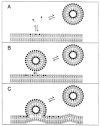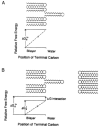Spontaneous lipid transfer between organized lipid assemblies
- PMID: 1450207
- PMCID: PMC4026044
- DOI: 10.1016/0304-4157(92)90007-w
Spontaneous lipid transfer between organized lipid assemblies
Figures



References
-
- Brown RE. In: Subcellular Biochemistry. Hilderson HJ, editor. Vol. 16. Plenum Press; New York: 1990. pp. 333–363. - PubMed
-
- Bruckdorfer KR, Graham JM. In: Biological Membranes. Chapman D, Wallach D, editors. Vol. 13. Academic Press; London: 1976. pp. 103–152.
-
- Lange Y. In: Handbook of Lipid Research: The Physical Chemistry of Lipids. Small DM, editor. Vol. 4. Plenum Press; New York: 1986. pp. 538–549.
-
- Sleight RG. Annu Rev Physiol. 1987;49:193–208. - PubMed
-
- Dawidowicz EA. Curr Top Membr Transp. 1987;29:175–202.
Publication types
MeSH terms
Substances
Grants and funding
LinkOut - more resources
Full Text Sources
